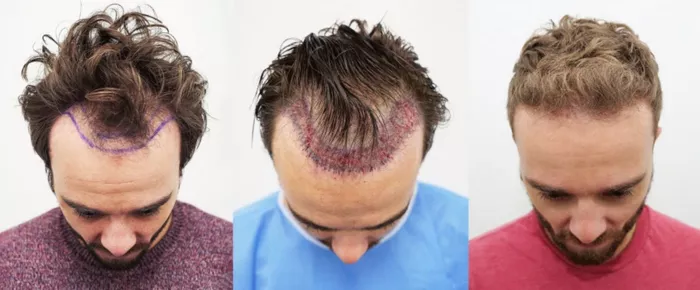Hair transplant surgery has become a transformative solution for individuals seeking to regain their confidence and restore a fuller head of hair. If you’re considering hair transplant surgery in Ontario, you’re on the right track toward reclaiming your hair and self-assurance. In this article, we’ll delve into the world of hair transplant surgery in Ontario, guiding you through the process of finding the best options for achieving your desired hair restoration results.
Understanding Hair Transplant Surgery
Hair transplant surgery is a procedure aimed at treating hair loss by relocating healthy hair follicles to areas of thinning or balding. The two primary methods are Follicular Unit Transplantation (FUT) and Follicular Unit Extraction (FUE). In FUT, a strip of scalp is removed, and follicles are harvested for transplantation. FUE involves individually extracting follicles from the donor area. The harvested follicles are then meticulously implanted into the recipient site. The surgery is performed under local anesthesia, and considerations like hairline design, natural patterns, and density play crucial roles. Successful outcomes depend on skilled surgeons, proper donor management, and post-operative care.
Researching Hair Transplant Clinics
When seeking the best hair transplant surgery in Ontario, thorough research is key:
1. Credentials and Experience:
Look for clinics with certified and experienced surgeons who specialize in hair restoration. Their expertise is vital to achieving natural-looking results.
2. Patient Reviews and Testimonials:
Online reviews and patient testimonials provide insights into the experiences of others who have undergone hair transplant surgery at a specific clinic.
3. Before-and-After Photos:
Browse through before-and-after photos of previous patients to assess the quality of work and the consistency of results.
Consult the process of hair transplantation
Hair transplantation involves several stages:
- Consultation: Assess your hair loss, donor area, and suitability for surgery.
- Preparation: Trim hair, discuss goals, and plan the procedure.
- Anesthesia: Administer local anesthesia to numb donor and recipient areas.
- Donor Hair Removal: Harvest hair follicles from a donor site (FUT or FUE).
- Graft Preparation: Carefully dissect and prepare follicles for implantation.
- Recipient Site Creation: Make tiny incisions in balding areas.
- Graft Implantation: Place grafts into the recipient sites with precision.
- Recovery: Follow post-op instructions for healing and care.
- Follow-up: Schedule appointments to monitor progress and results.
- Results: Natural hair growth occurs over months, enhancing appearance and confidence.
Technology and Techniques
Consider the technologies and techniques utilized by the clinic:
1. Advanced Tools:
Clinics that invest in the latest surgical tools and technologies often offer more precise and efficient procedures.
2. Method Expertise:
Inquire about the clinic’s proficiency in both FUT and FUE techniques, as a well-rounded skill set can lead to better outcomes.
Patient-Centric Approach
The best clinics prioritize patient satisfaction and well-being:
1. Comprehensive Care:
Look for clinics that offer comprehensive care, including pre-surgery consultations, personalized treatment plans, and post-surgery follow-ups.
2. Realistic Expectations:
A reputable clinic will set realistic expectations for the outcome of your hair transplant surgery and provide honest information.
See Also: Using Rogaine After a Hair Transplant: Timing & Benefits
Conclusion:
Choosing the best hair transplant surgery in Ontario requires thorough research, consultation, and consideration of various factors. By exploring clinics’ credentials, expertise, patient testimonials, and technologies, you can make an informed decision that aligns with your goals and expectations. Remember that the journey to hair restoration is a collaborative effort between you and an experienced hair transplant surgeon. Together, you can embark on a path toward regaining your confidence, hair, and sense of self.
Empower yourself with knowledge, seek out reputable clinics, and take confident steps toward a more fulfilling hair restoration experience.


